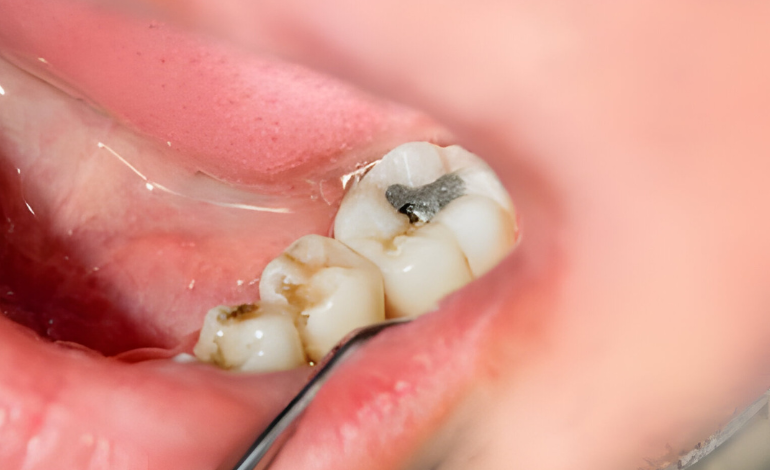Things to know about the Dental Filling
A cavity, or tiny hole in a tooth, can be filled with a filling. Tooth damage, which is to seal up holes in the enamel that do not harm the teeth's inside pulp and protect the blood vessels and nerves, may expose the tooth to decay due to chipped enamel. Dental fillings can restore tooth structures damaged by decay, external damage, or replacing structures supported by dental implants, restoring their morphology, integrity, and function. Dental fillings are required to preserve the tooth structure and keep the teeth performing their vital functions. However, they cannot fully heal all tooth damage.
Dental fillings are not necessary for every cavity
In the past, dentists would fill every cavity. But with advances in science and technology, there are more options available. Additionally, there are a few situations in which dental fillings are not genuinely required. Because dental filling is painful, many people even attempt to avoid getting them.
Five dental disorders that are treatable without Dental filling
A few common enamel defects can be discarded, as they suggest a calcium deficiency during development and do not require treatment. If these stains are irritating, there are easier ways to lessen or hide them.
The word "cavity," which describes a tooth that has rotted due to bacterial activity, signifies a "breach in the surface of the tooth." Degradation isn't a breach; it's only the beginning. At the very least, they maintained checks and adhered to proper oral hygiene protocols. Every dentist does a decay test to see whether cavities have developed. Children who can not care for their teeth should be subject to stringent oral hygiene recommendations.
This condition can be left as if the deterioration stops and no apparent bacterial infections are present. The patient can preserve their teeth and does not have a high risk of developing severe decay.
Teeth can develop these self-cleaning saucer-like defects as they age or under extreme pressure, especially on the chewing surfaces of the maintained teeth. These defects can be full of symptoms or only mildly sensitive.
Little chips can be fixed by smoothing over the affected areas instead of adding fillings.
How can you know whether a dental filling is necessary?
Severe decay of a tooth's nerve, accompanied by pain, swelling, or pus, necessitates dental fillings and additional treatments until the root recovers.
Types of Materials Used For Dental Filling Procedure
Gold fillings are durable and robust, often lasting 10 to 15 years. Because they don't deteriorate, they can be a safe alternative for dental restorations. However, they usually represent the priciest choice and require many dental visits for proper fitting, so they are still commonly used.
Silver amalgam, formed of silver mixed with tin, zinc, copper, and mercury, is the most popular substance used for dental fillings. Silver amalgam fillings have a few known risks. Its prominent silver look makes it less visually acceptable to some than other dental filling materials.
The amalgam's mercury releases small amounts and can enter the lungs by inhalation. There are adverse effects on the kidneys and brain related to high levels of mercury vapour exposure. The FDA views amalgam fillings as safe for adults and children six years of age and older, as studies have not discovered any connection between the fillings and health issues. Silver amalgam, which has received FDA approval, is still one of the finest materials for dental fillings. It has 10 to 15 years in its lifetime.
Composite resin is an exceptionally good material that is becoming increasingly popular for dental fillings. Because they may be made to match the color of your natural teeth, these fillings have a beautiful look. The cost of composite fillings is higher than that of silver amalgam, but they often last 10 to 15 years.
Porcelain fillings are a fantastic alternative to front tooth dental fillings. Porcelain, often called ceramic filler, is durable and stain-resistant. When the price is right, ceramics can be color-matched to your natural teeth. They often last 10 to 15 years.
Dental filling procedure
Your dentist will initially use a local anaesthetic to numb the surrounding tissue of the tooth that needs restoration. The deteriorated area will then be removed using a drill, air-based abrasion tool, or laser. The position and severity of the decay, together with your dentist's comfort level, instructions, and interest in that specific piece of equipment, will all influence the tool choice.
After that, your dentist will dig into or test the affected area to determine whether all of the decay has been removed. Once the decay has been removed, your dentist will clean the cavity of dirt and bacteria to make space for the filling. Decay is near the root; dentists may use a glass ionomer, composite resin, or a material liner to protect the nerve. Your dentist will polish and finish the filling next.
Visit the best dental clinic for your dental filling treatment
Dental fillings are essential for preserving oral health and halting tooth deterioration. Treating cavities and returning teeth to function are dependable and efficient options. Depending on the tooth's location and aesthetic considerations, you may have ceramic, amalgam, composite, or gold fillings. Ensuring the lifespan and effectiveness of your dental fillings requires you to follow the aftercare guidelines and maintain good dental hygiene. Our Crown Dental Assisting you with the timely detection and resolution of any possible problems with your fillings is another benefit of routine dental cleanings and checkups. It is essential to remember that dental fillings safeguard your teeth and enhance your general oral health.

















